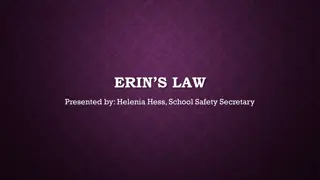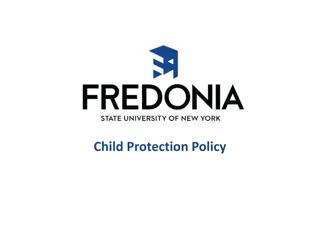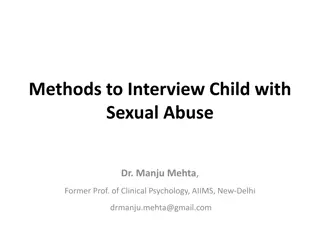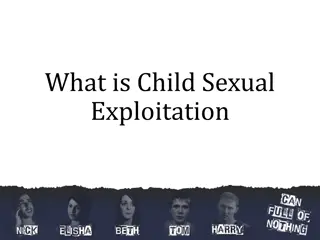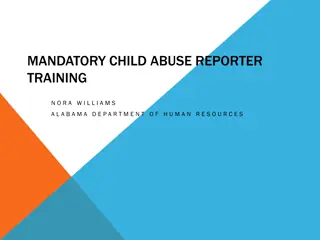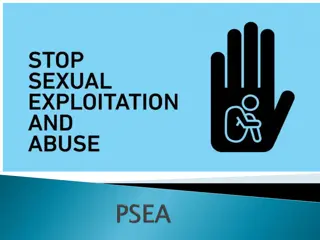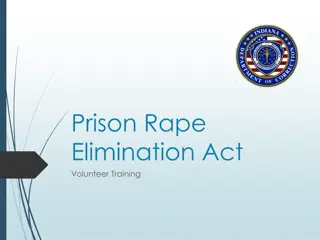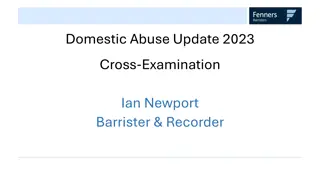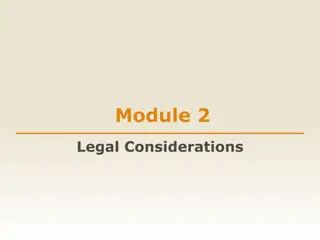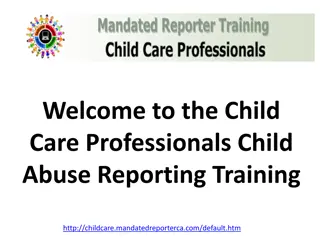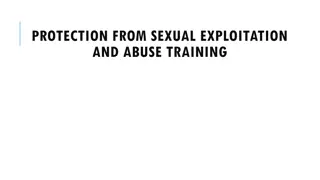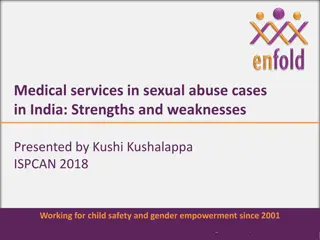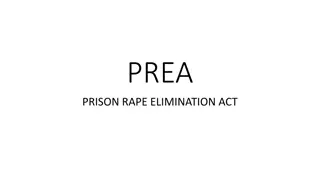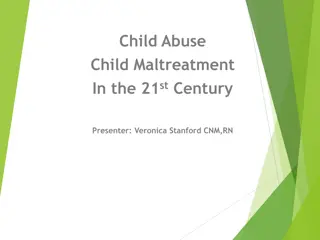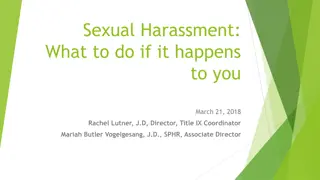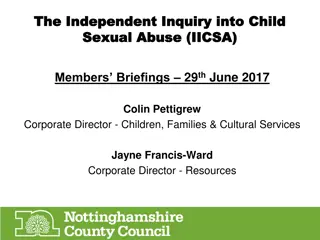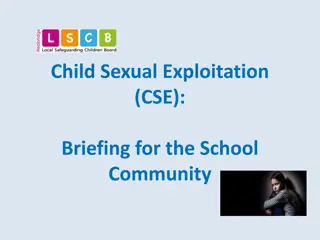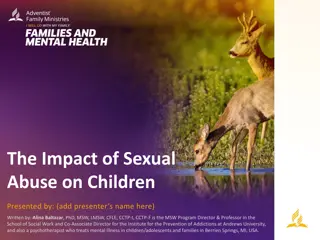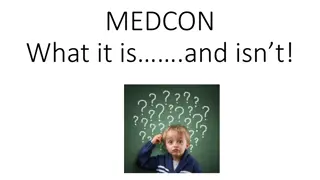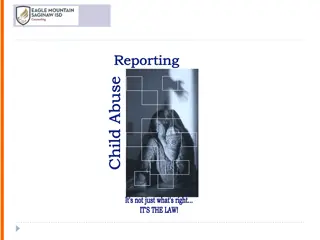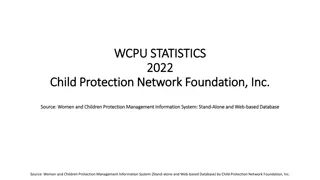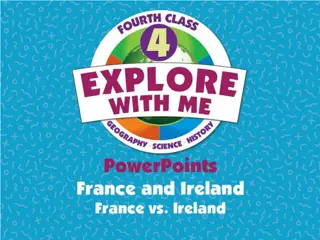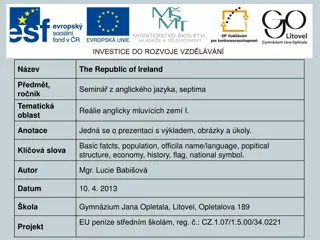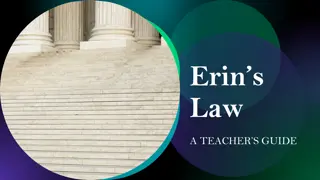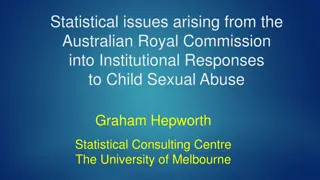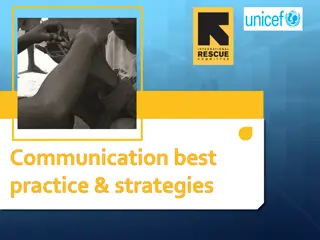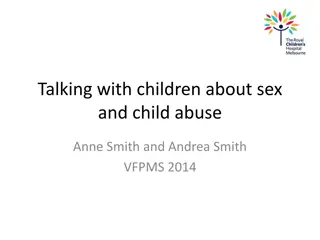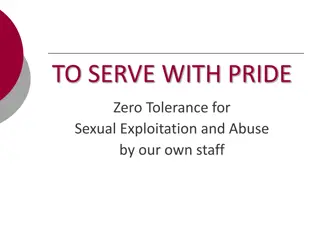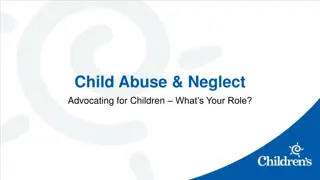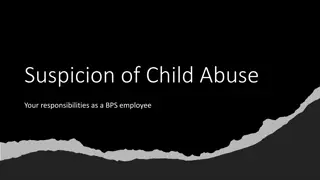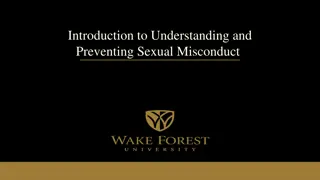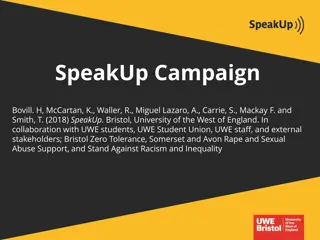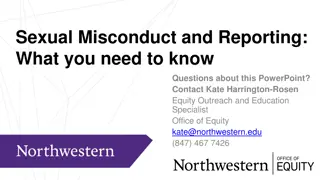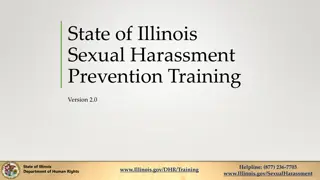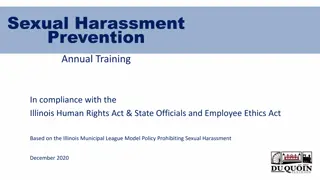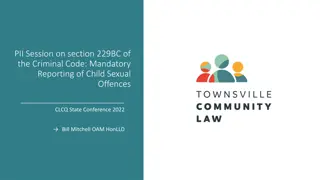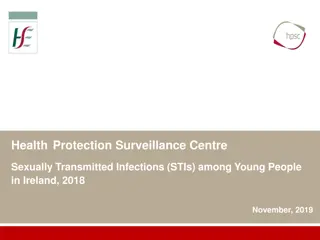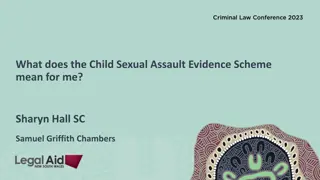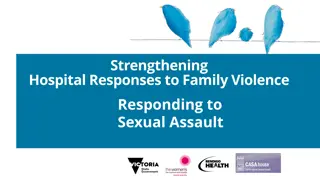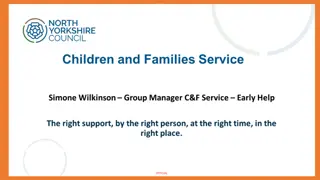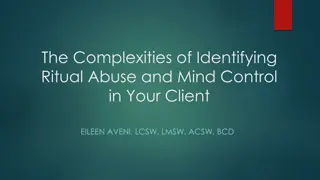Understanding Child Sexual Abuse Disclosures in Ireland
Explore the prevalence of child sexual abuse in Ireland, including historical events, prevalence rates worldwide, and data on disclosures and delays. The Irish perspective offers insights into the impact on individuals and the broader community, shedding light on the challenges and importance of addressing this sensitive issue.
Download Presentation

Please find below an Image/Link to download the presentation.
The content on the website is provided AS IS for your information and personal use only. It may not be sold, licensed, or shared on other websites without obtaining consent from the author. Download presentation by click this link. If you encounter any issues during the download, it is possible that the publisher has removed the file from their server.
E N D
Presentation Transcript
Child sexual abuse disclosures: An Irish perspective Rosaleen McElvaney Dublin City University
The Irish story 1978 Child Abuse Guidelines 1979 establishment of Rape Crisis Centre 1988 Child sexual abuse assessment centres The X case 1994 Suffer Little Children TV documentary. Fr. Brendan Smyth 1996 Dear Daughter TV documentary 1998 The Roderick Murphy Inquiry investigation into swimming authorities 1999 States of Fear TV documentary 2000 - Commission to Inquire into Child Abuse Act 2002 Suing the Pope & Cardinal Secrets TV documentaries 2002 Residential Institutions Redress Act 2005, 2006 Ferns Report, Archdiocese of Dublin Report, Cloyne Report 2009 Report of the commission to inquire into child abuse in Ireland, 2009
Ireland Population c4.5 million 10% immigrants The most catholic country in the world (Blanchard, 1954, p.17) 93% of Irish respondents who were raised as catholics still claim this affiliation. Although mass attendance has declined (90% once a week in 1973, 62% in 1988, 43% in 2008, Nic Ghiolla Phadraig, 2009)
Prevalence csa worldwide Prevalence rates for penetrative child sexual abuse are higher for girls ranging from 2.9% to 10.5% (Sweden); 3% (UK); 4.9% (Turkey); 5.6% (Ireland); 7.8% (Greenland); and for boys, ranging from 0.6% and 5.5% (Sweden); 1% (UK); 2.7% (Ireland); and 3.2% (Greenland). Broader definitions of contact sexual abuse range from 10% (UK); 11.3% (Turkey); 13.9% (Sweden); 15.8% (Denmark); 19% (Spain); 20.4% (Ireland); 39.8% (Switzerland) for girls; and for boys ranging 6% (UK); 6.7% (Denmark); 15.2% (Sweden); 15.5% (Spain); 16.2% (Ireland). (Lalor & McElvaney, 2010)
Prevalence in Ireland SAVI (McGee et al., 2002) 1 in 5 women (20.4%) contact 1 in 10 (10%) non-contact 1 in 6 men (16.2%) contact 1 in 14 (7.4%) non contact Overall, almost one third of women (30.3%) and a quarter of Irish men (23.6%) reported some level of sexual abuse in childhood in Ireland.
Disclosure Priebe and Svedin (2008) N= 4,339 adolescents n=1962 some form of sexual abuse(65% of girls and 23% of boys). 59.5 told no-one friend of my own age 6.8% reported to authorities McGee et al. (2002) N=3,118 adults Unwanted sexual experiences under age of 17 years 47% told no one before the survey
Delay in First Disclosure (n=162) n=162 129 female 33 male Age 10-17 41% intrafamilial 25% penetrative abuse 29% 33% Immediately < 6 Months > 6 Months Missing 33% 5% McElvaney, R. & Lloyd, A. (2014). Informal disclosures of child sexual abuse: A retrospective analysis. ISPCAN European Congress, Dublin.
Conceptual Model - Disclosure Containing the secret Active withholding Pressure cooker effect Confiding McElvaney, R., Greene, S. & Hogan (2011). Containing the secret of child sexual abuse. Journal of Interpersonal Violence, doi: 10.11/770886260511424503
Active withholding C: I tried so many times to tell me Mam to tell me dad like to tell me brother. Like I used to just come in and say Mam I you and then she d say No it doesn t matter I you and then I used to even think about telling me old primary school teacher an then I tried to tell me brother. I remember one day he was coming out of his bedroom an I was like said what? an eh I said matter . He said what eh I says Nothing it doesn remember that night like and just crying and crying like and not knowing what to do like ringing (boyfriend) and saying oh I can don t know what to do . . R: it sounds like you were really trying so hard C: aw it was unreal R: how long was that going on for that you were actually trying to tell somebody? C: about 2 years (C09). ve something to tell what? an I m only messing with d say (brother) ah nothing it doesn s wrong with you? t matter he an t an like I t tell anybody I
Pressure cooker effect I didn t tell anyone for a good few months and it was killing me (C20), I kinda just tried to bury it and it didn it kept coming up to the surface every now and again and I d get angry and cry and I my room (C08). t work cos d run up to
Confiding we were talking about our problems and em we were trying to help her with that. And then like out of nowhere like I just felt like saying it. Cos it was like built up and all of a sudden I just said it (C08)
Containing the secret Sample of 29 young people Only family members (n=6) Schools unaware (n=11) Siblings unaware (n=2) Extended family unaware (n=2) Emotional response to abuse is unmodulated and uncontained (Bentovim, 2002) Self containment as means of self-regulating emotional impact of abuse; containment within relationships
To tell or not to tell? being believed being asked shame/self-blame fears and concerns for self and others peer influence McElvaney, R. Greene,, & Hogan, D. (2014). To tell or not to tell? Factors influencing young people s infomal disclosures of child sexual abuse, Journal of Interpersonal Violence, 29,5, 928 947 DOI: 10.1177/0886260513506281
Current study Retrospective analysis of children s files Potential sample of 1,000 Pilot study (n=39 files) Gender: 32 females, 7 males Age: 2-15 at beginning of abuse, 3-17 at time of assessment 40% (n=15) intrafamilial abuse 40% (n=15) penile penetration
Content analysis (n=39) Theme Feeling distressed Opportunity to tell Fears for self Peer influence Concerns for others Being believed Shame/guilt no 26 23 21 14 12 % 66% 59% 54% 36% 31% 11 11 28% 28%
Books to read Irish context McKay, S. (1998). Sophia s Story. Dublin:Liffey Press Travers, O.,(1999). Behind the silhouettes: Exploring the myths of child sexual abuse. McGee H. et al., 200The SAVI Report: Sexual Abuse and Violence in Ireland. Fublin: The Liffey Press The end of innocence: Child sexual abuse in Ireland (Ed., Lalor, K., 2001) http://arrow.dit.ie/aaschsslbk/1/ Raftery, M. & O Sullivan (1996). Suffer the little children. Dublin: New Island Goode,H. McGee, H. & O Boyle,C., (2003). Time to listen: Confronting child sexual abuse by catholic clergy in Ireland. Dublin: The Liffey Press. Kavanagh, J.,J & P & Quinn, M., (2011)Click, click click. Dublin:Hatchette Books Keenan, M., (2011). Child sexual abuse and the Catholic Church. New York: Oxford University Press



